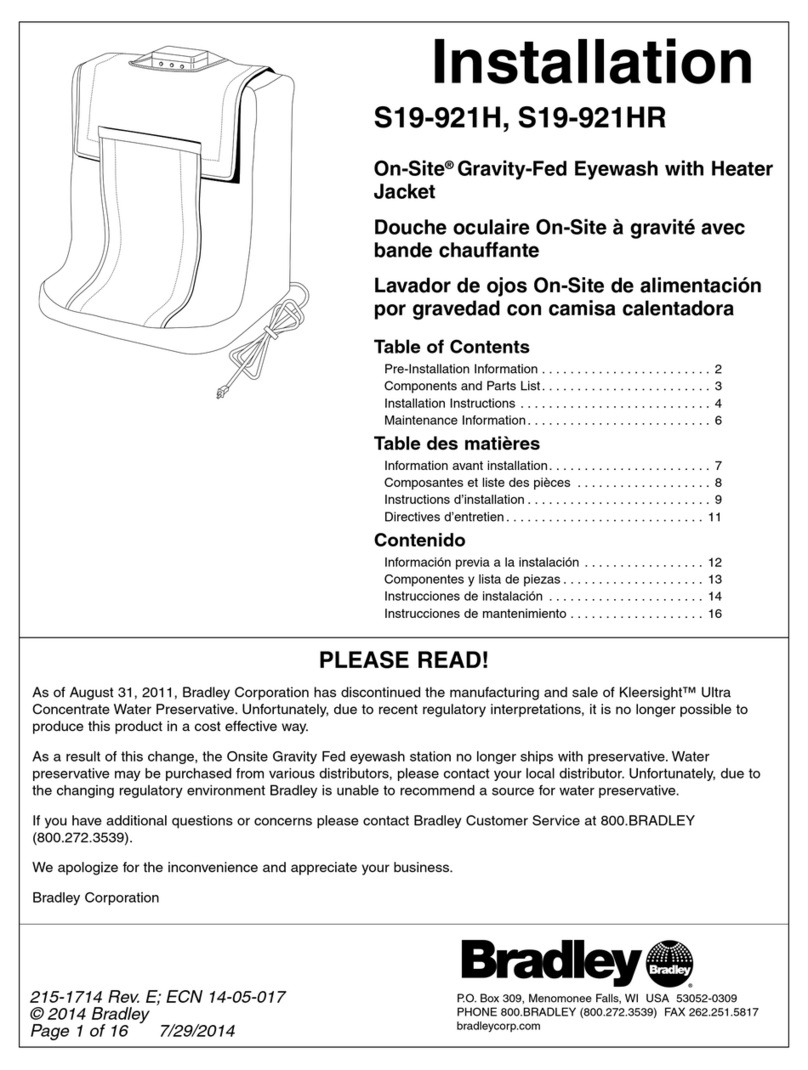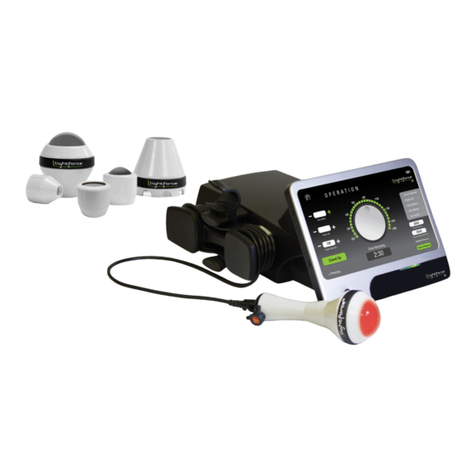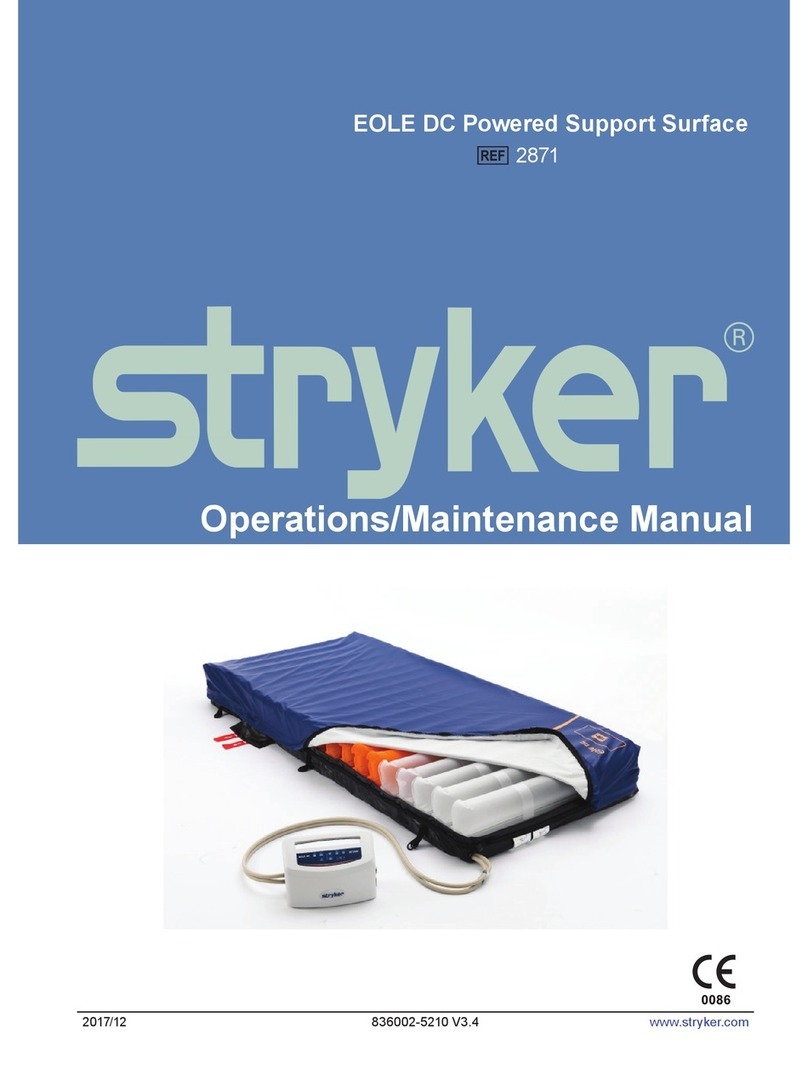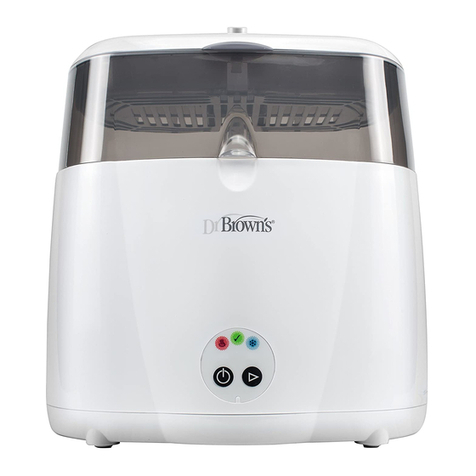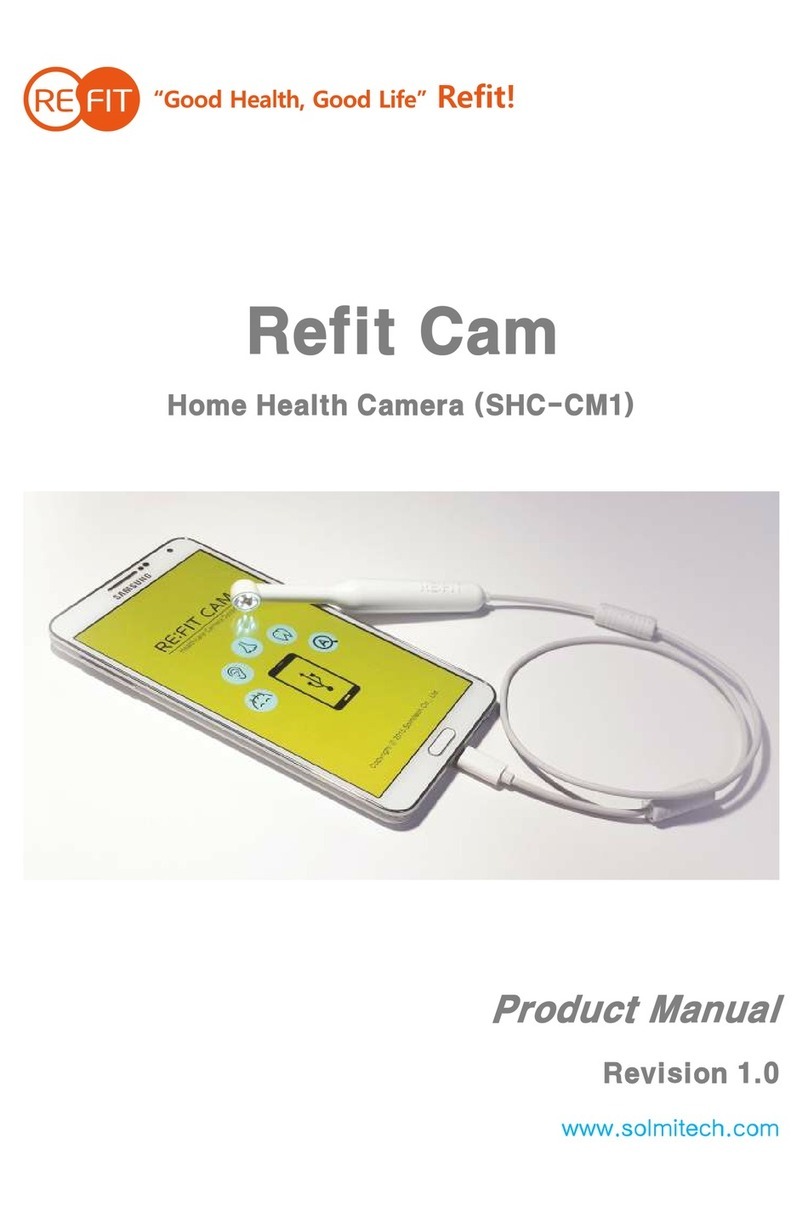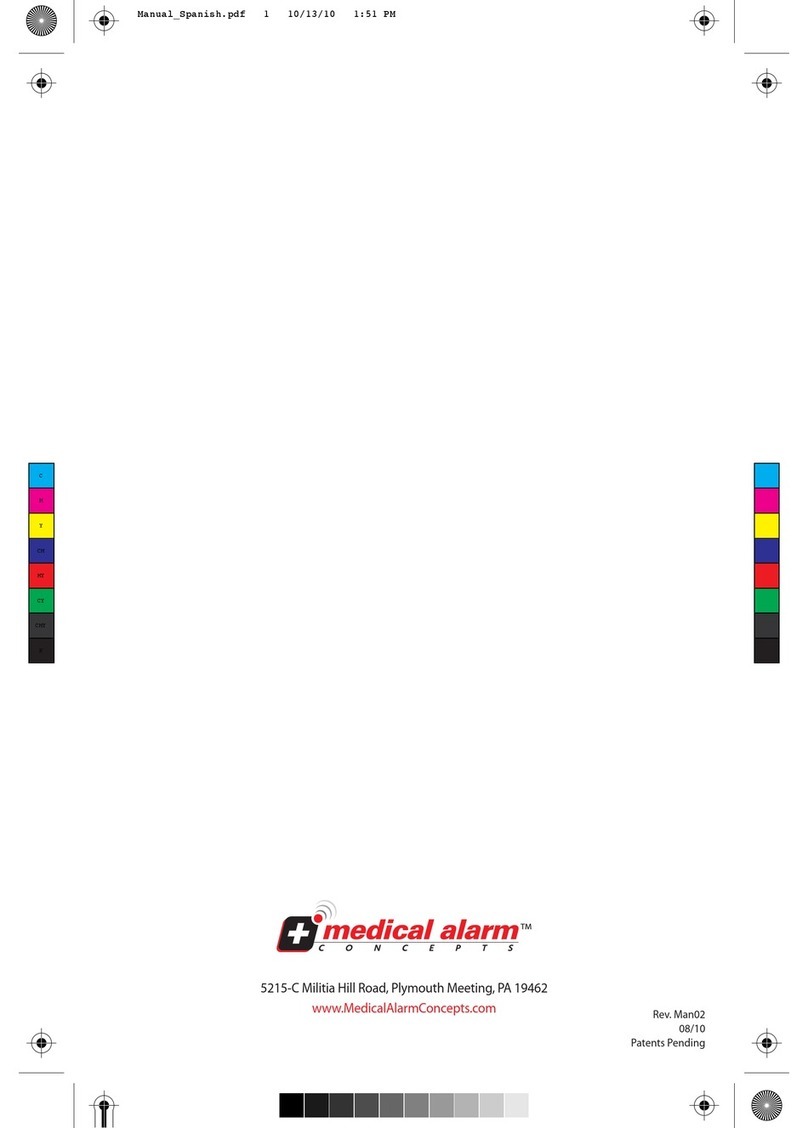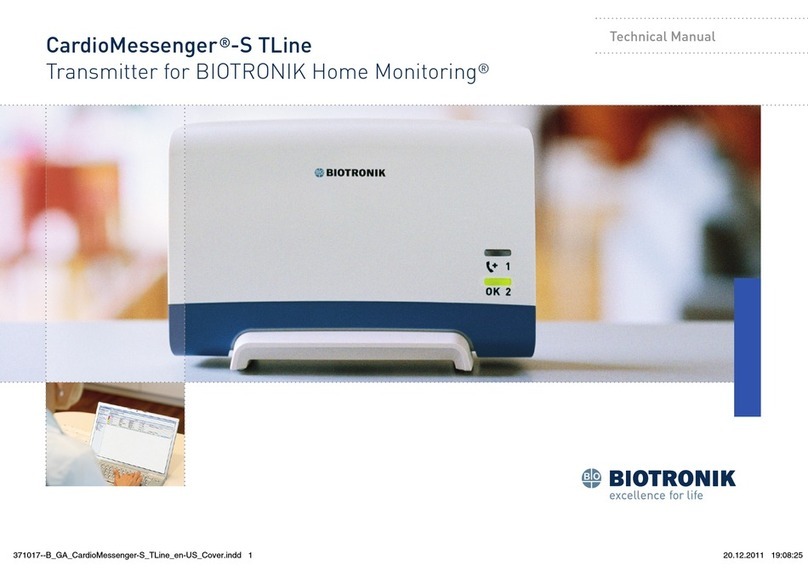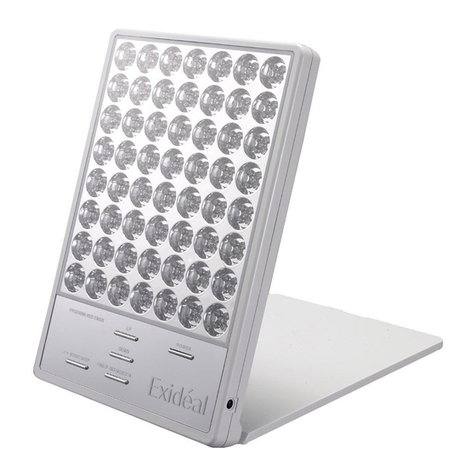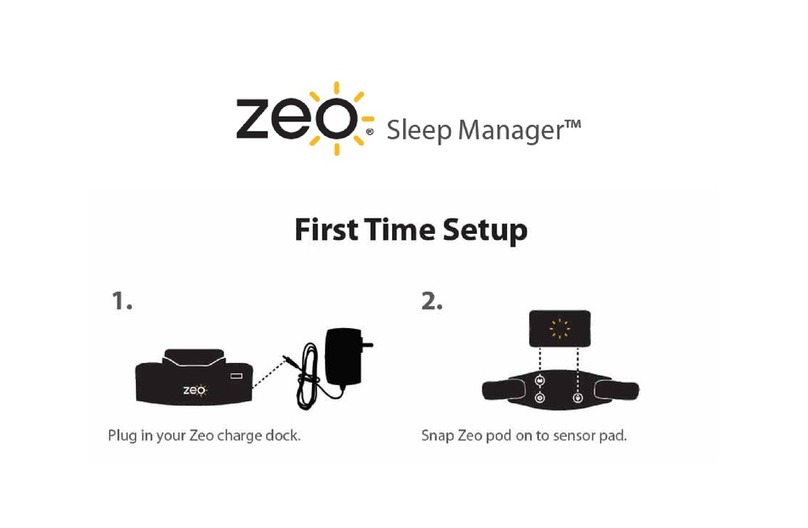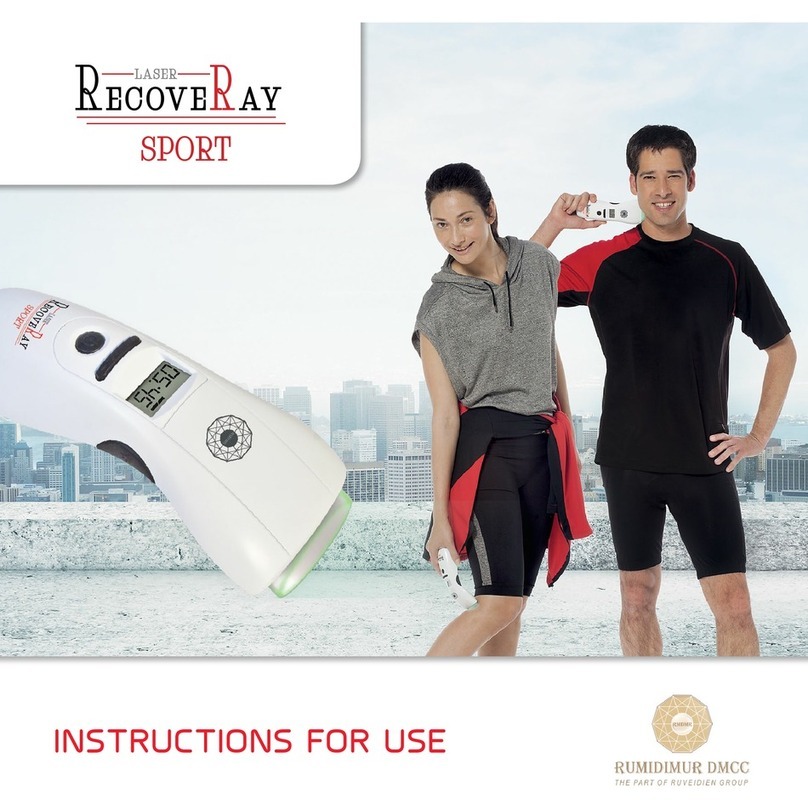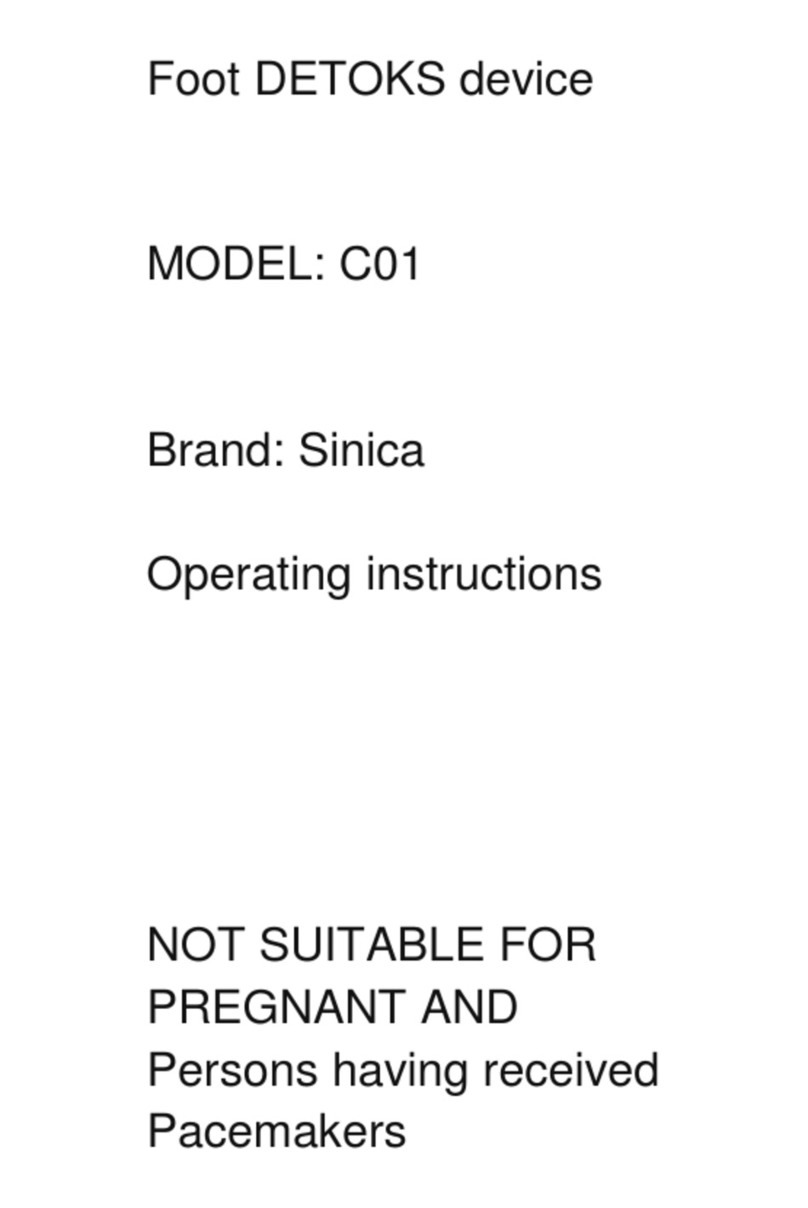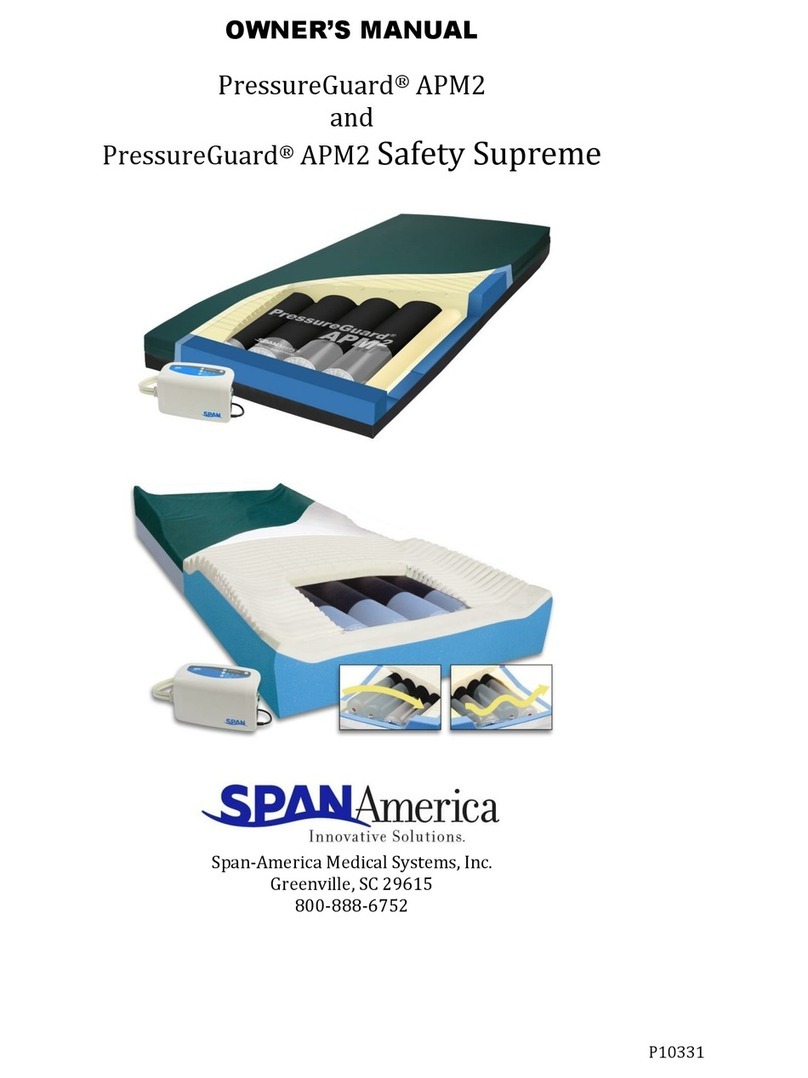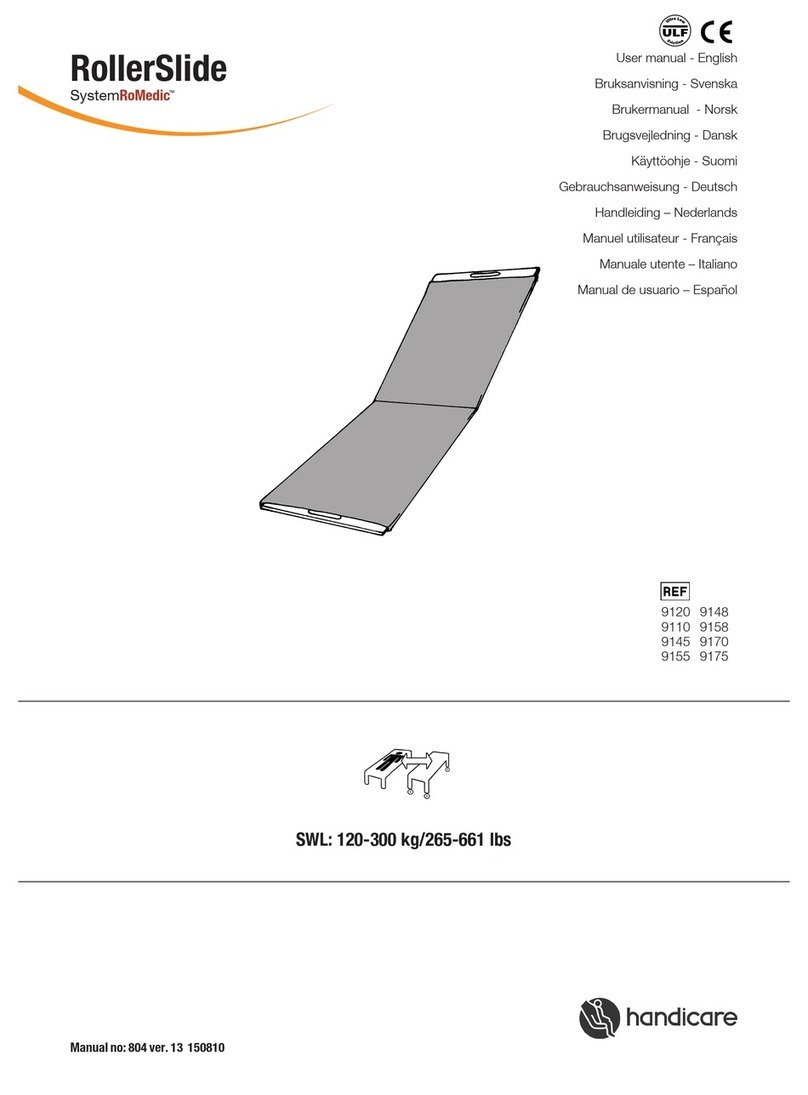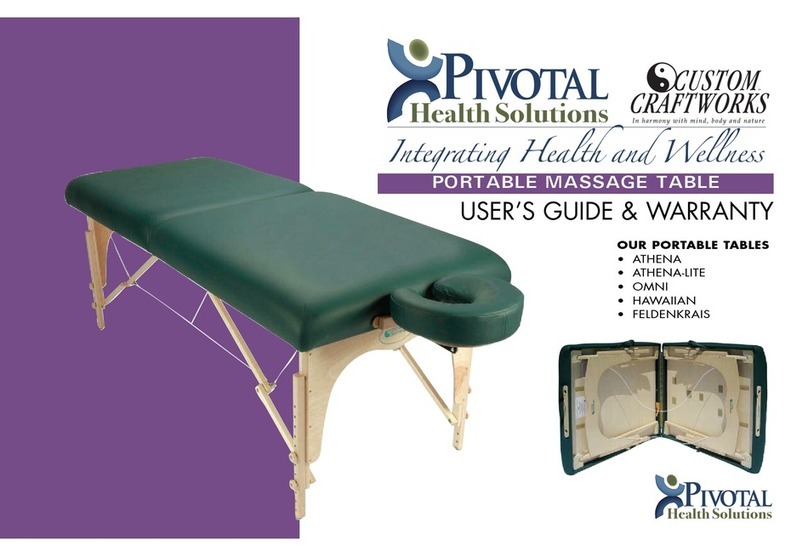IACER S.r.l. 9 of 36 MNPG148 Rev. 02 02/07/15
Electrodes must not be used when they no longer stick to the skin. Repeated use of the same
electrodes can compromise the safety of the stimulation, in fact it can cause skin redness that can last
for many hours after stimulation.
The manufacturer is responsible of the performances, safety and integrity of the device only if:
Eventual additions, modifications and/or reparations are performed by authorized personnel;
The electrical system is in compliance with the national laws;
The device is used in compliance with the instructions of the user manual.
Electromagnetic interference
The device does not produce and receive any interferences from others equipment. However it is
recommended the use of the device at least 3 metres away from televisions, monitors, mobile phones or
any other electronic equipment.
Contraindications
Patient in pregnancy, tuberculosis, juvenile diabetes, viral (in acute phase) illnesses, mycosis, dermatitis,
cardiopathic subjects, tumours, serious arrhythmias or pacemaker carriers, children, metallic prosthesis
carriers, acute infections, open wounds, epileptics (different medical prescriptions excepted).
No significant side effects are known of. Some particularly sensitive people could report skin redness in the
area where the electrodes were positioned: the redness usually disappears a few minutes after the end of the
treatment. Should the redness persist please consult a doctor.
In rare cases, evening stimulation carried out in the evening can cause some people to experience difficulty
in falling asleep. If this occurs, suspend the evening treatment.
How to use
MIO-CARE PRO is a portable and battery-powered device that generates TENS and NEMS currents. It is
particularly indicated for daily treatments of the most commons muscle diseases. MIO-CARE PRO is
provided with two independent and adjustable intensity channels.
MIO-CARE PRO has 14 preadjusted TENS programs, 21 preadjusted NEMS programs, 15 preadjusted
BEAUTY programs and 12 free memories adjustable by the user to create programs according to his
needs. The program MEM 13 is a battery test.
PRELIMINARY INSTRUCTIONS
1. CABLES AND ELECTRODES CONNECTION
Position the electrodes on the skin (see the following paragraph), connect the electrostimulation cable
jacks to the self-adhesive electrodes and then connects the cables to the outputs on the upper side of
MIO-CARE PRO;
2. SWITCHING ON OF THE DEVICE
Turn MIO-CARE on using the button;
PREADJUSTED PROGRAMS
Read the follow instructions to use the preadjusted programs of MIO-CARE PRO.
1. MENU AND PROGRAM SELECTION
Select the menu by pressing MODE button (TENS, REHA, MEM).
Select the program using PRG+ and PRG+ buttons (please make reference to “Programs list” to get
all technical specifications);
2. INTENSITY SELECTION
You can increase current intensity using CH1 and CH2 buttons (up-arrow). The value can be adjusted
with stepping of 1 mA. Press CH1 and CH2 buttons (down-arrow) to decrease the intensity.
